Malacca is a state in Malaysia that is home to an amazing variety of birds. This state is a paradise for bird watchers, with over 200 species of birds recorded in the region.
From colorful kingfishers and bee-eaters to majestic hornbills and eagles, there is something for everyone! The wetlands of Malacca provide a great habitat for a wide range of species, from migratory birds to resident birds.
Whether you’re an experienced bird-watcher or just starting out, you’re sure to see something special in Malacca.
1. Black-crowned Night Heron
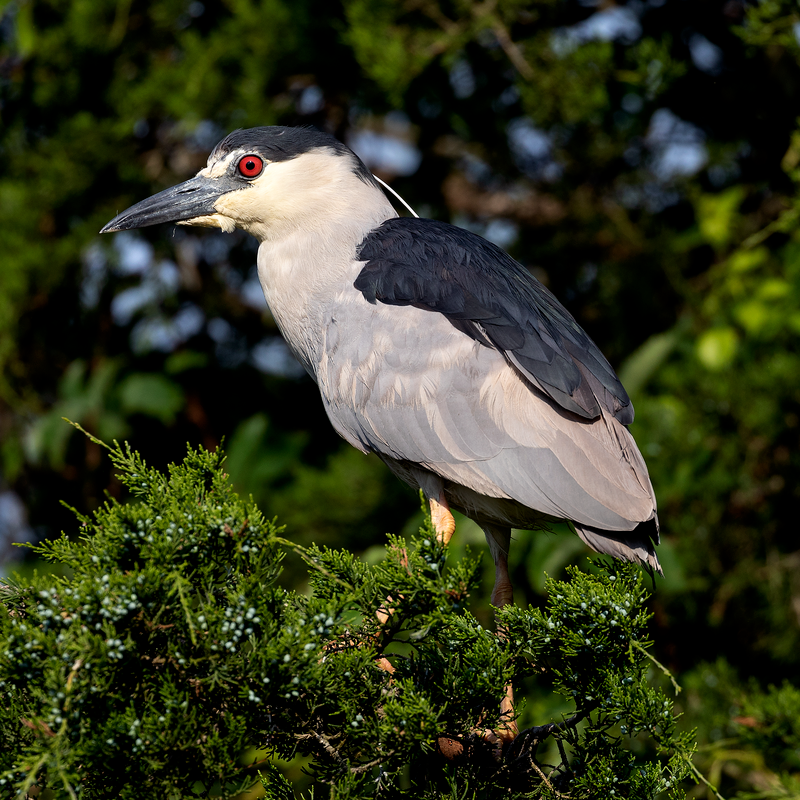
The black-crowned night heron, also known as the black-capped night heron, is a medium-sized heron that is native to many parts of the world, including Europe, Asia, North America, and South America. It is commonly referred to as the night heron in Eurasia.
This species of heron is quite adaptable and can be found in a variety of habitats, from wetlands and rivers to coastal areas and grasslands. They tend to forage near water, where they can find their preferred prey of fish, crustaceans, and insects.
The black-crowned night heron is a stocky bird, with a wingspan of around 68 cm (27 in). Its plumage is dark gray-brown above, and white below, with distinctive black and white stripes on the head and neck. The head is crowned with a black crest, and the bill is yellow.
The eyes are yellow, and the legs are yellow-green. It is active at night when it can be seen roosting in trees or flying to feed. These herons breed in colonies, nesting in trees or shrubs near water. The female lays 2 to 6 eggs, which are incubated for about 25 days.
The chicks are covered with white down and are dependent on their parents for food for the first few weeks. The black-crowned night heron is widespread and common in most of its range and is not considered to be threatened.
However, populations in some areas have declined due to habitat loss and degradation.
| Kingdom | Animalia |
| Phylum | Chordata |
| Class | Aves |
| Order | Pelecaniformes |
| Family | Ardeidae |
| Genus | Nycticorax |
| Species | N. nycticorax |
2. Malaysian Night Heron
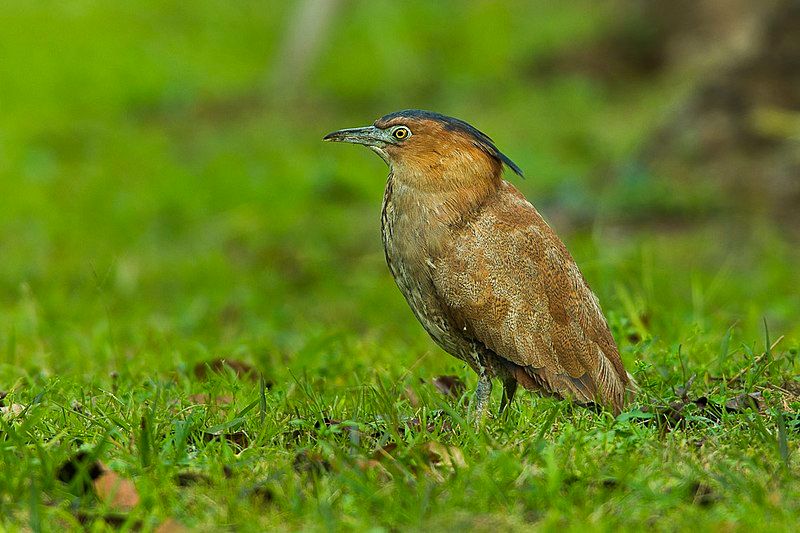
The Malayan night heron is a medium-sized heron, found in both southern and eastern Asia. It is also referred to as the Malaysian night heron or tiger bittern. It is usually found in open wetlands, such as marshes, swamps, riverbanks, and mangrove forests.
It has a long neck, long legs, and a short tail. It is grayish-brown in color with darker colored streaks. It has yellow eyes, a yellowish bill, and black legs and feet. The Malayan night heron is a nocturnal bird, meaning it is active at night.
It feeds on fish, amphibians, insects, and crustaceans. It nests in tree cavities and on the ground in dense vegetation.
During the mating season, the male will perform a courtship dance, with its wings fluttering and body quivering. The Malayan night heron is listed as Vulnerable on the IUCN Red List. It is threatened by habitat loss, pollution, and hunting for food and feathers.
Conservation efforts are needed to protect this species and its habitat.
| Kingdom | Animalia |
| Phylum | Chordata |
| Class | Aves |
| Order | Pelecaniformes |
| Family | Ardeidae |
| Genus | Gorsachius |
| Species | G. melanolophus |
3. Javan Myna
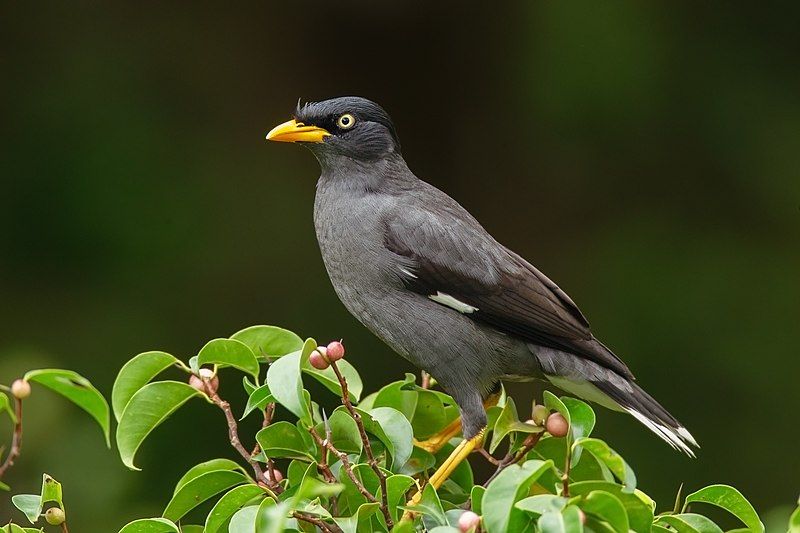
The Javan myna is a species of myna bird that is part of the starling family. It is native to Bali and Java, two islands in Indonesia, but has since been introduced to a variety of other Asian countries and even as far away as Puerto Rico.
The myna is also known as the white-vented myna due to the white feathers found around the animal’s vent. The Javan myna is mainly found in tropical forests and woodlands, but it is also seen in more urbanized areas.
It is a medium-sized bird, typically measuring around 7.1 inches in length with a wingspan of up to 10.6 inches. The head and upper parts of the body are black with a glossy blue-green sheen, while the lower parts of the body are white.
The bill is yellow and the legs are pink. The Javan myna is omnivorous and feeds on fruits, insects, and sometimes carrion. It is also known to steal food from other birds and animals, particularly nesting birds and bats.
It is social and usually found in pairs or small groups, and is known for its loud and distinctive call. The Javan myna is a common and widespread species and is not considered to be endangered.
It is also considered to be a pest in some areas, due to its habit of stealing food from other animals. Despite this, it is an important species in the ecosystem, helping to disperse seeds and control insect populations.
| Kingdom | Animalia |
| Phylum | Chordata |
| Class | Aves |
| Order | Passeriformes |
| Family | Sturnidae |
| Genus | Acridotheres |
| Species | A. javanicus |
4. Indian Pond Heron
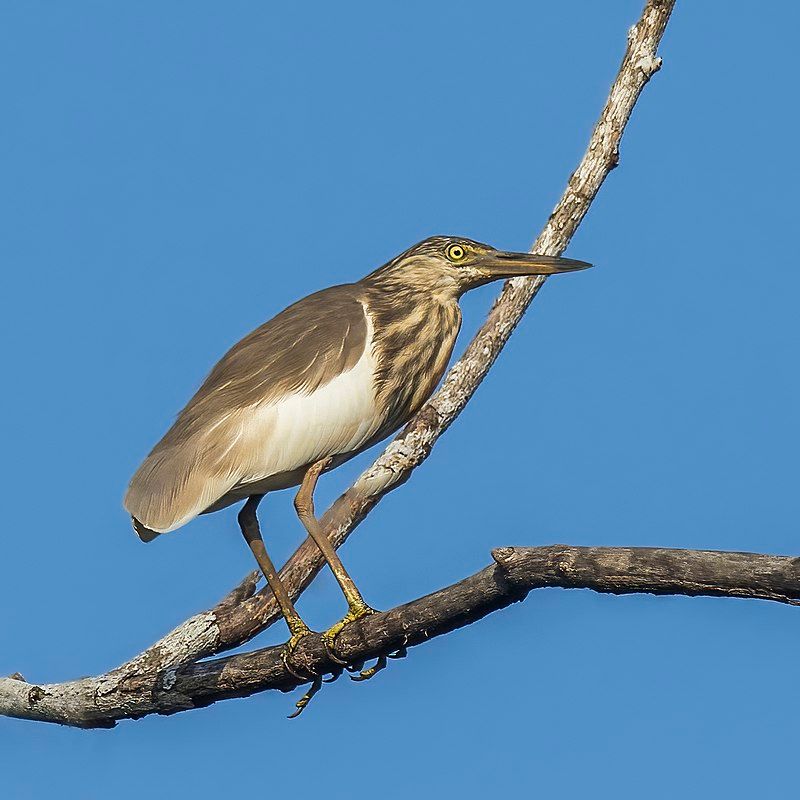
The Indian pond heron, also known as the paddy bird, is a species of heron originating in the Old World. It is most commonly found in southern Iran and parts of the Indian subcontinent, including Burma and Sri Lanka.
This small heron has a distinctive black crown and back, as well as white feathers on the chest and belly.
It has a long, pointed yellow bill that it uses to catch fish in shallow pools of water. The Indian pond heron is a solitary bird that lives in wetlands, including ponds, marshes, and wet meadows.
It is most active in the early morning and late evening when it uses its long bill to catch fish, frogs, and other small creatures. It may also take insects such as beetles, grasshoppers, and locusts.
During the breeding season, the male and female form a pair and build a nest in a tree or shrub. The female lays up to four eggs, which are incubated by both parents. The Indian pond heron is an important species in many wetland ecosystems.
It helps to control insect populations, and its droppings are an important source of nutrients for plants. It is also an important food source for many different species of birds, mammals, and reptiles.
Unfortunately, this species is vulnerable to habitat loss and pollution, and its numbers are dwindling. Conservation efforts are needed to ensure its survival in the coming years.
| Kingdom | Animalia |
| Phylum | Chordata |
| Class | Aves |
| Order | Pelecaniformes |
| Family | Ardeidae |
| Genus | Ardeola |
| Species | A. grayii |
5. Olive-backed Sunbird
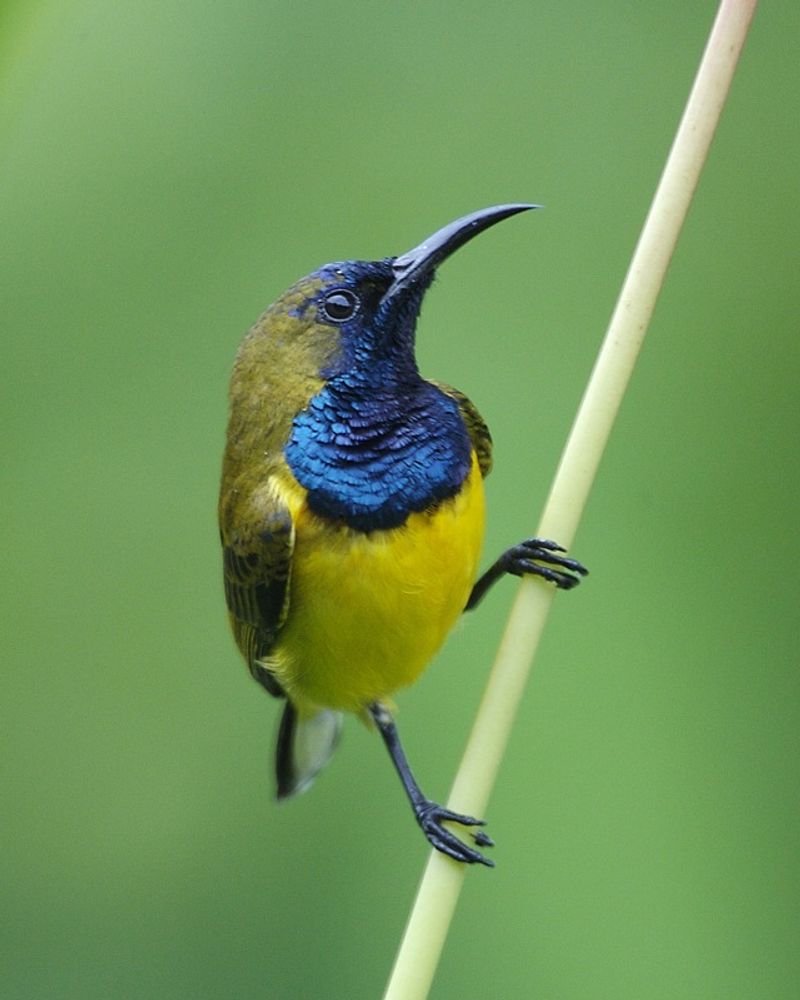
The olive-backed sunbird is a species of sunbird that is found in a range of regions from Southern Asia to Australia. It is also known as the yellow-bellied sunbird due to its vibrant yellow underside.
This species of bird is relatively small in size and has an olive-green back with white and black barring on its wings. It has an orange throat, a black forehead, and a short, curved bill.
The olive-backed sunbird is a nectar-feeding species, meaning that it feeds on the nectar of flowers. It has a unique foraging behavior in which it can hover in mid-air while it collects nectar from flowers.
Additionally, it is known for its habit of drinking water from wet leaves or mud puddles. This species of sunbird plays an important role in pollination as it spreads pollen from flower to flower while it feeds.
In addition to its pollination duties, the olive-backed sunbird is an important part of the food chain as it is preyed upon by birds of prey and other predators.
All in all, the olive-backed sunbird is an important species of bird that is found throughout Southern Asia and Australia.
| Kingdom | Animalia |
| Phylum | Chordata |
| Class | Aves |
| Order | Passeriformes |
| Family | Nectariniidae |
| Genus | Cinnyris |
| Species | C. jugularis |
6. Common Tailorbird
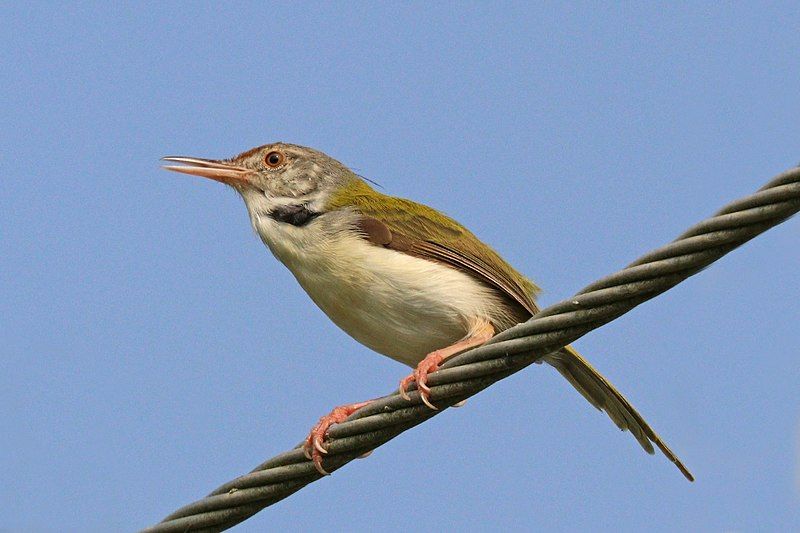
The common tailorbird is a type of songbird that is found widely across tropical Asia. This small, attractive bird is particularly well-known for its distinctive nest-building habits, where it uses its sharp beak to stitch together pieces of leaves to form a small cup or pouch.
This behavior has earned it the nickname of “tailorbird” and it has been immortalized in literature by Rudyard Kipling’s character “Darzee” in “The Jungle Book”.
As well as being a common sight in more rural locations, the tailorbird is also becoming increasingly common in urban gardens, where it can be seen searching for food on the ground or in shrubbery. It is often found in small flocks, chirping and singing together.
The common tailorbird is a beautiful and unique species that is sure to bring joy to any garden.
| Kingdom | Animalia |
| Phylum | Chordata |
| Class | Aves |
| Order | Passeriformes |
| Family | Cisticolidae |
| Genus | Orthotomus |
| Species | O. sutorius |
7. Zebra Dove
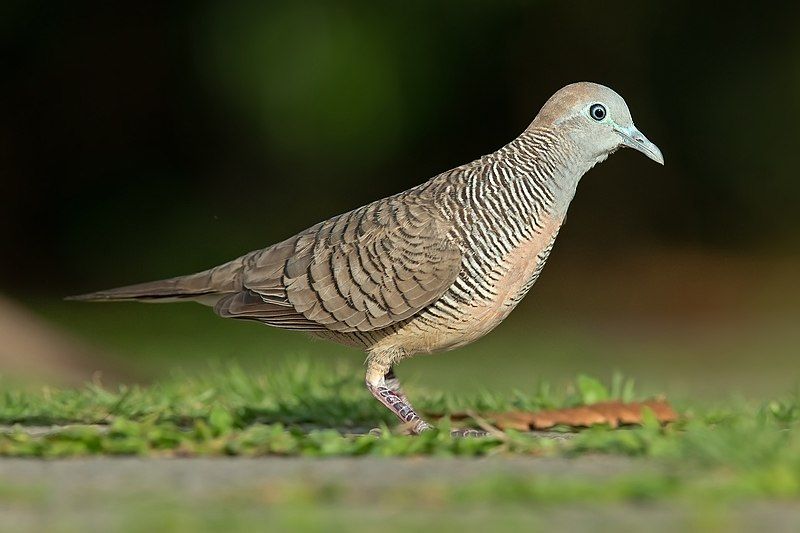
The zebra dove is a species of bird of the Columbidae family that is native to Southeast Asia. It is a small bird, usually measuring between 20 and 28 centimeters in length. Its body is predominantly grey-brown in color, with white spots and black-and-white barring.
Its tail is quite long, making up almost half of its body length. The zebra dove has also been referred to as the barred ground dove or barred dove. The zebra dove inhabits open woodlands, grasslands, and shrublands.
It is a ground-dwelling species that feeds mainly on insects and seeds, which it forages for on the ground or in low vegetation. It is an omnivorous species, meaning it will also eat berries and other fruits.
The zebra dove is a social species and has been observed in small flocks of up to 30 individuals. The zebra dove is also a vocal species, with males singing to attract mates during the breeding season.
Their song is described as a soft, melodic warble, consisting of a series of short, high-pitched trills. The zebra dove nests in trees or shrubs, typically in small colonies. The female will lay a clutch of two eggs, which will hatch after around two weeks.
The chicks will fledge after 16 to 18 days. Overall, the zebra dove is a fascinating species of bird that can be found in many parts of Southeast Asia. It’s unique coloration and melodic song make it a popular species for birdwatchers and photographers.
| Kingdom | Animalia |
| Phylum | Chordata |
| Class | Aves |
| Order | Columbiformes |
| Family | Columbidae |
| Genus | Geopelia |
| Species | G. striata |
8. Black-naped Oriole
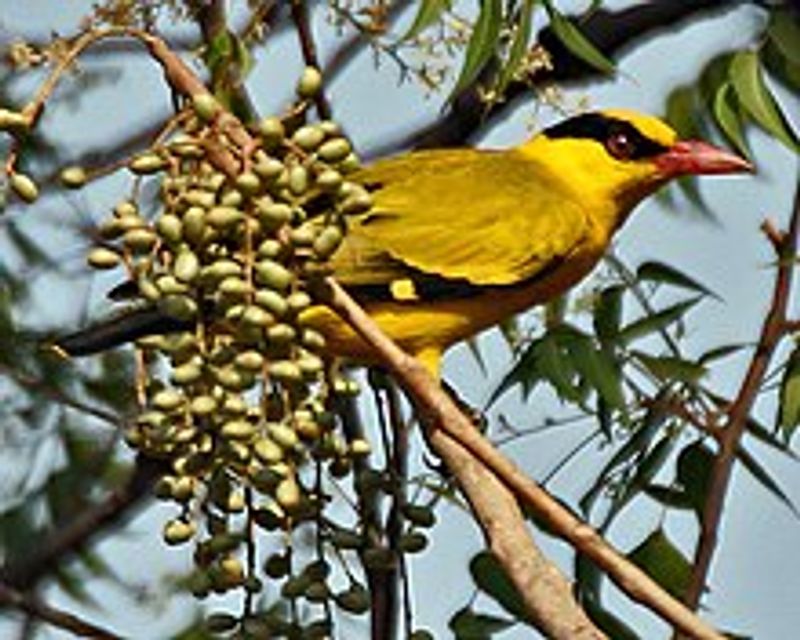
The black-naped oriole is a type of passerine bird that belongs to the family of orioles. This species of bird can be found in many parts of Asia, with its range of distribution being quite large.
Within this wide range, there are several different populations of the black-naped oriole, each with its own distinct characteristics. In the past, the slender-billed oriole was considered to be a subspecies of the black-naped oriole.
This means that the slender-billed oriole was thought to be closely related to the black-naped oriole, and they both had some common characteristics.
However, further research has since shown that the two species have distinct differences and the slender-billed oriole has since been classified as its own species.
| Kingdom | Animalia |
| Phylum | Chordata |
| Class | Aves |
| Order | Passeriformes |
| Family | Oriolidae |
| Genus | Oriolus |
| Species | O. chinensis |
9. Little Egret
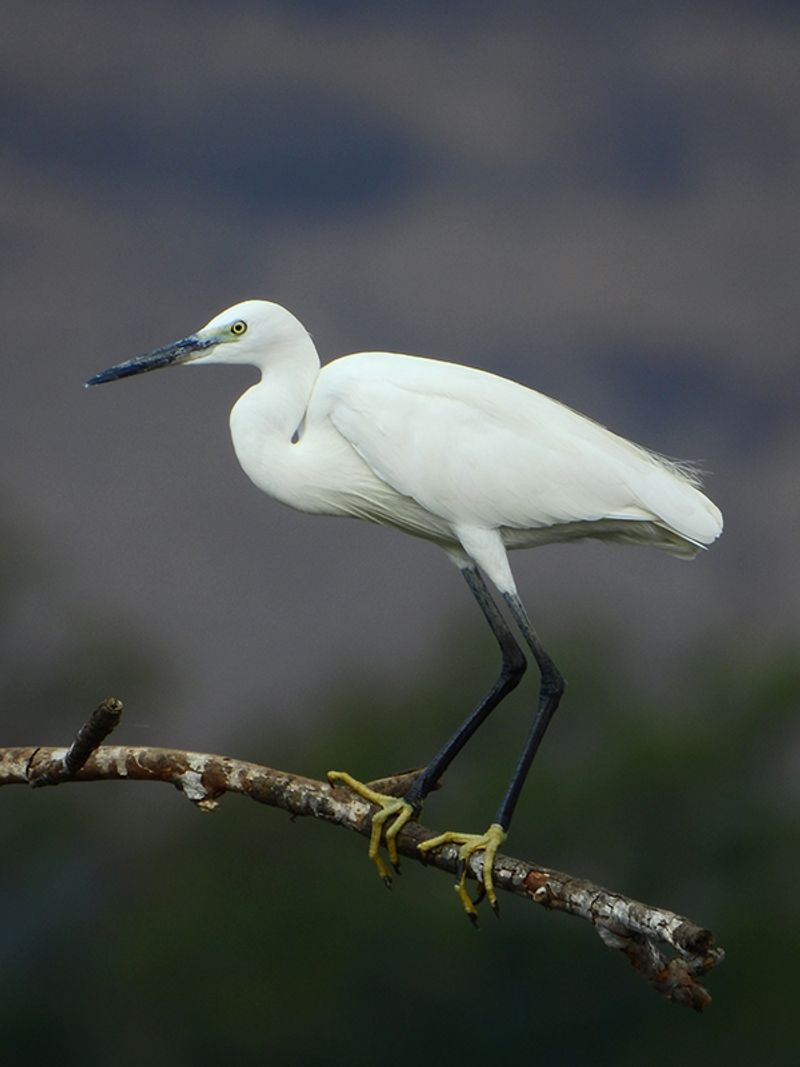
The little egret is a unique species of heron that can be found in the Ardeidae family. It is a small bird with a white plumage and a long slender black beak. The legs of this species are also black, and in the western race, the feet are bright yellow in color.
This species is an aquatic bird, which means it is adapted to live in both shallow water and on land. It feeds on a variety of small creatures, such as insects, crustaceans, and fish, which it hunts in both its aquatic and terrestrial habitats.
The little egret is an adaptable species, capable of surviving in a wide range of environments. Its bright plumage and long slender black beak make it a very distinctive species, and it is a pleasure to observe in its natural habitat.
| Kingdom | Animalia |
| Phylum | Chordata |
| Class | Aves |
| Order | Pelecaniformes |
| Family | Ardeidae |
| Genus | Egretta |
| Species | E. garzetta |
10. White-throated Kingfisher
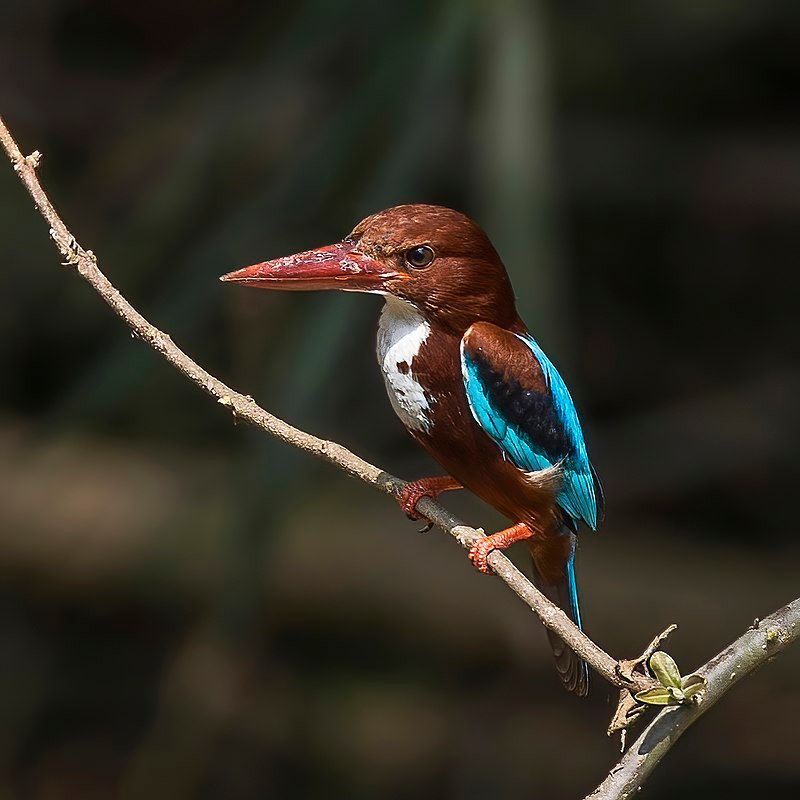
The white-throated kingfisher, also known as the white-breasted kingfisher, is a species of tree kingfisher that is found throughout much of Asia. It is native to countries such as Sinai, India, China, and Indonesia.
This kingfisher is a resident species, meaning that it does not migrate for long distances, although some populations may migrate for shorter distances. The white-throated kingfisher is easily recognizable due to its striking colors and markings.
Its plumage is bright blue on its back, with a white throat and chest. Its head is topped with a black crest, and its bill is a bright orange-red color.
This species is typically found near bodies of water, where they hunt for their prey such as small fish, crustaceans, frogs, and insects. The white-throated kingfisher is an important species in its native range, as it helps to keep insect populations in check.
They also provide important ecosystem services, such as controlling pests, pollinating flowers, and dispersing seeds.
This species is listed as of least concern by the International Union for Conservation of Nature, but its population is declining due to habitat destruction and degradation.
| Kingdom | Animalia |
| Phylum | Chordata |
| Class | Aves |
| Order | Coraciiformes |
| Family | Alcedinidae |
| Genus | Halcyon |
| Species | H. smyrnensis |
11. Rock Dove
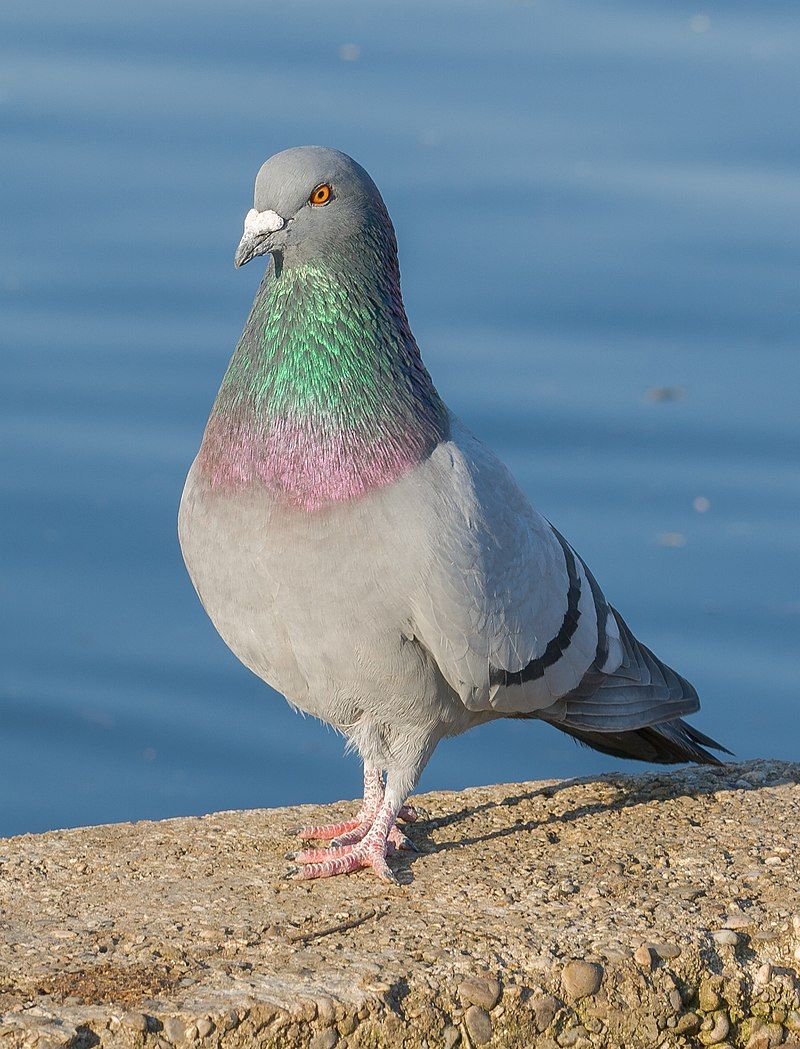
The rock dove, rock pigeon, or common pigeon is a species of bird that belongs to the Columbidae family. It is often referred to as simply the ‘pigeon’ in common usage. The domestic pigeon is a descendant of the rock dove, resulting from human intervention.
As a result of this, populations of feral pigeons have increased around the world due to escaped domestic pigeons. This is because domestic pigeons are able to survive and breed in the wild, and the feral pigeons are the offspring of these escaped domestic pigeons.
Feral pigeons are able to thrive in a variety of habitats, meaning that they have been able to spread rapidly across the world.
| Kingdom | Animalia |
| Phylum | Chordata |
| Class | Aves |
| Order | Columbiformes |
| Family | Columbidae |
| Genus | Columba |
| Species | C. livia |
12. Eurasian Tree Sparrow
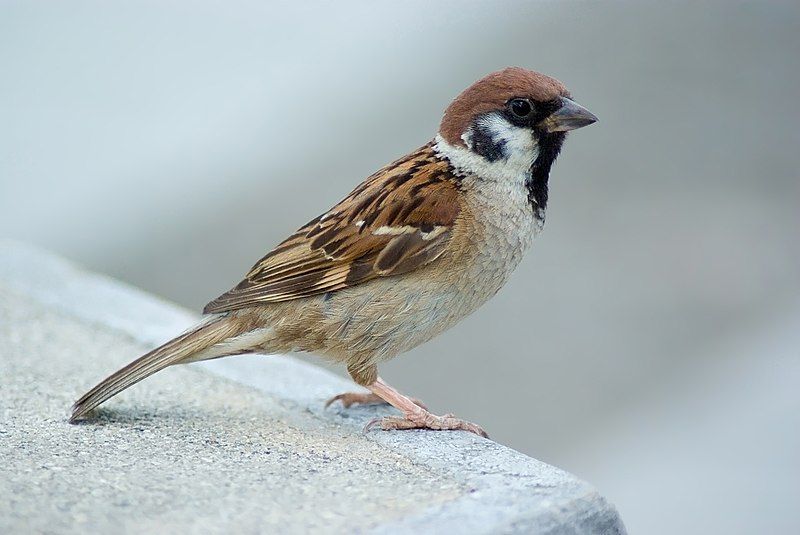
The Eurasian tree sparrow is a species of passerine bird in the sparrow family, which is an incredibly diverse group of songbirds that inhabit a variety of habitats around the world.
The bird is easily identified by its distinct plumage, which consists of a rich chestnut crown and nape, as well as a black patch on each pure white cheek. Male and female Eurasian tree sparrows have similar plumage, and young birds are a duller version of the adults.
They are quite small in size, measuring up to 15 centimeters in length, and they typically weigh between 18 and 24 grams. They have short, rounded wings and a long, slightly notched tail.
Eurasian tree sparrows can be found in parts of Europe, Asia, and North Africa, where they inhabit open fields and grasslands, parks, gardens, and woodlands.
They typically build nests in trees, shrubs, and buildings, and they feed on a variety of seeds, grains, insects, and other small invertebrates.
| Kingdom | Animalia |
| Phylum | Chordata |
| Class | Aves |
| Order | Passeriformes |
| Family | Passeridae |
| Genus | Passer |
| Species | P. montanus |
13. Pink-necked Green Pigeon
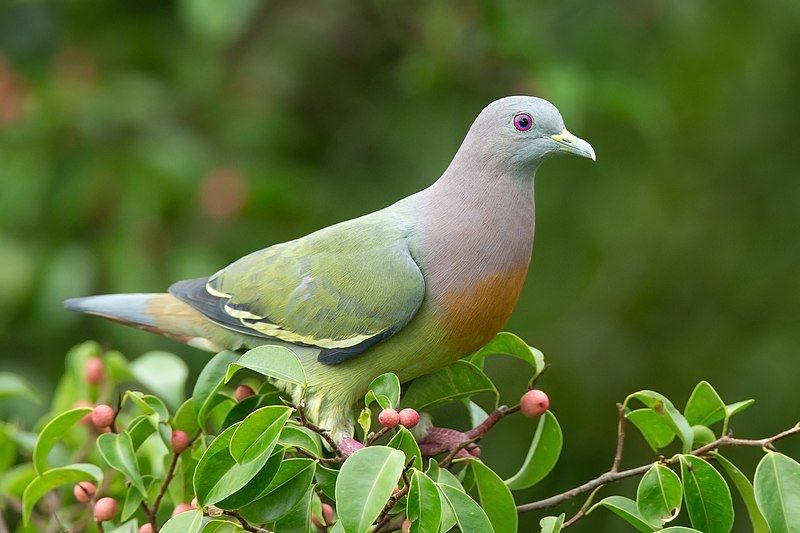
The pink-necked green pigeon is a species of bird belonging to the family Columbidae, which also includes other species such as doves and pigeons.
It is found throughout the Southeast Asia region, ranging from Myanmar and Vietnam in the north, down to the major islands of Indonesia and the Philippines in the south. It is a common species and can be found in both urban and rural habitats, as well as in forests.
Its diet consists mainly of fruits and seeds, and it is known to feed in flocks. The pink-necked green pigeon is an important species in the region, providing a source of food for many local people.
In addition, it is a vital part of the local ecosystem, playing an important role in dispersing seeds and helping to maintain the region’s biodiversity.
| Kingdom | Animalia |
| Phylum | Chordata |
| Class | Aves |
| Order | Columbiformes |
| Family | Columbidae |
| Genus | Treron |
| Species | T. vernans |
14. Common Koel
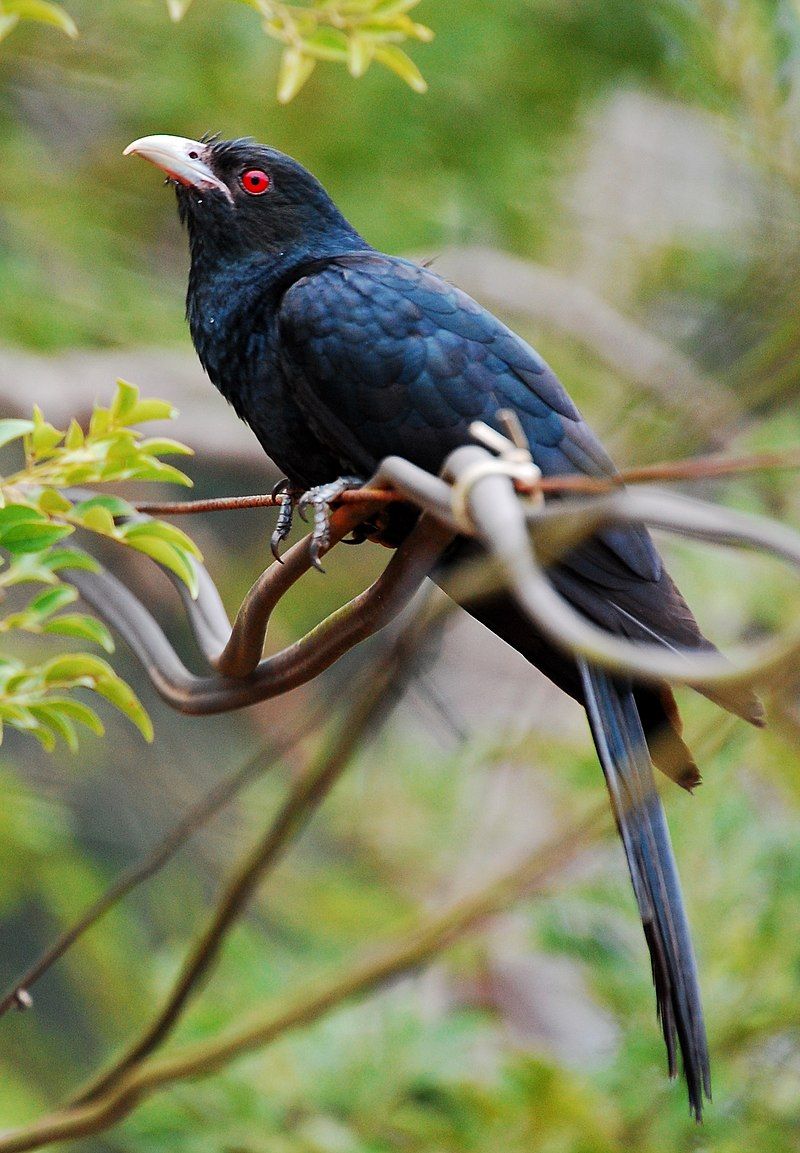
The Asian koel is a species of bird belonging to the Cuculiformes order, which is comprised of birds known as cuckoos. These birds have a distribution that extends across the Indian Subcontinent, parts of China, and Southeast Asia.
This species forms part of superspecies with the closely related black-billed koels and Pacific koels, which are sometimes treated as subspecies of the Asian koel. The Asian koel is a medium-sized bird, with a length of around 40 cm and a weight of around 120 to 140 g.
It has a black head and back, with a chestnut-brown chest and white belly. The wings and tail are gray and black, and the beak is orange-yellow. The Asian koel is typically found in open woodlands near water bodies and in human-altered landscapes.
They feed mainly on insects and fruits and are known to be brood parasites, laying their eggs in the nests of other bird species. The males are known for their loud, melodious calls, which can be heard throughout the day.
| Kingdom | Animalia |
| Phylum | Chordata |
| Class | Aves |
| Order | Cuculiformes |
| Family | Cuculidae |
| Genus | Eudynamys |
| Species | E. scolopaceus |
15. Large-tailed Nightjar
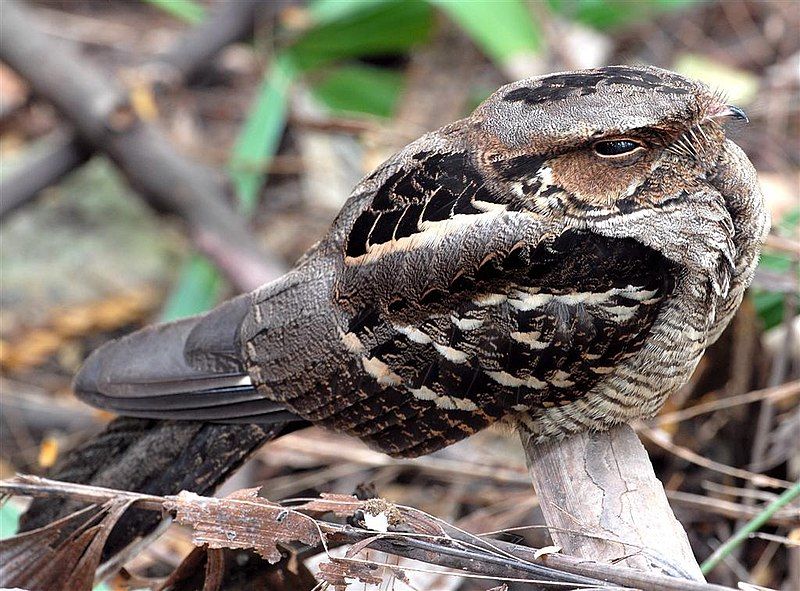
The large-tailed nightjar is a species of nightjar belonging to the family Caprimulgidae, a family of mostly nocturnal birds with distinctively long wings.
It is found in a wide range of habitats from the southern Himalayan foothills, extending east into South Asia and Southeast Asia, and even as far north as northern Australia.
This species is well adapted to the various habitats it can be found in, including forests, open woodlands, savannas, and even urban areas. It is generally a solitary bird but can be seen in small groups during the breeding season.
The large-tailed nightjar has a distinctive call, a sharp, repetitive ‘chuk-chuk-chuk’ that is often heard during the night. The large-tailed nightjar is an important species for the local ecosystems, playing a role in controlling insect populations.
Its diet consists of mainly insects, which it catches on the wing. It is also an important food source for many predators, including owls and hawks.
| Kingdom | Animalia |
| Phylum | Chordata |
| Class | Aves |
| Clade | Strisores |
| Order | Caprimulgiformes |
| Family | Caprimulgidae |
| Genus | Caprimulgus |
| Species | C. macrurus |
16. Little Green Pigeon
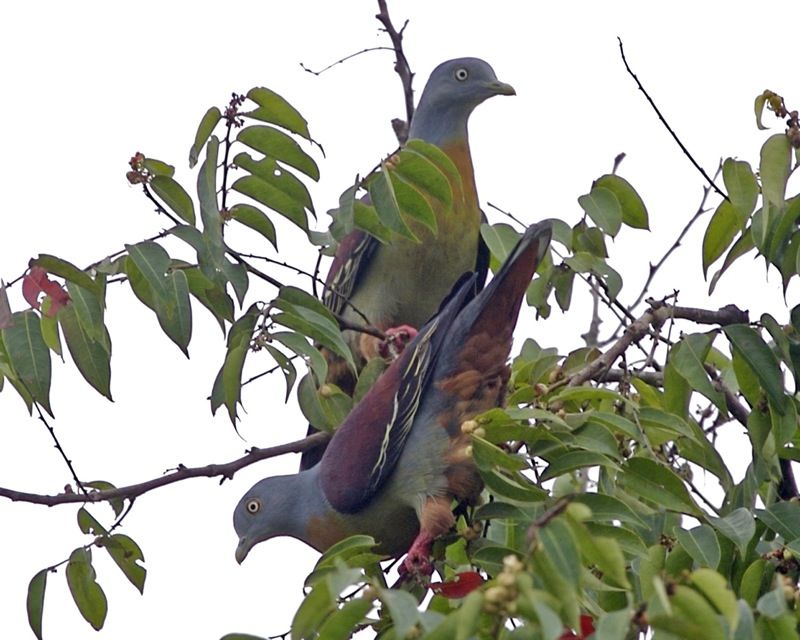
The little green pigeon is a species of bird in the family Columbidae. It is a small bird, smaller than other species in the genus Treron, and is found in the tropical regions of Brunei, Indonesia, Malaysia, Singapore, and Thailand.
The natural habitat of the little green pigeon is in subtropical and tropical moist lowland forests. The little green pigeon is adapted to its environment and is able to survive in its natural habitat.
It feeds on fruits, nuts, and seeds found in the forests and is able to fly between trees to access food sources. The little green pigeon is an important part of the tropical environment, as it helps disperse the seeds of the plants it eats.
It is also a vital part of the food chain in its natural habitats, providing food for predators such as birds of prey and snakes.
| Kingdom | Animalia |
| Phylum | Chordata |
| Class | Aves |
| Order | Columbiformes |
| Family | Columbidae |
| Genus | Treron |
| Species | T. olax |
17. Spotted Dove
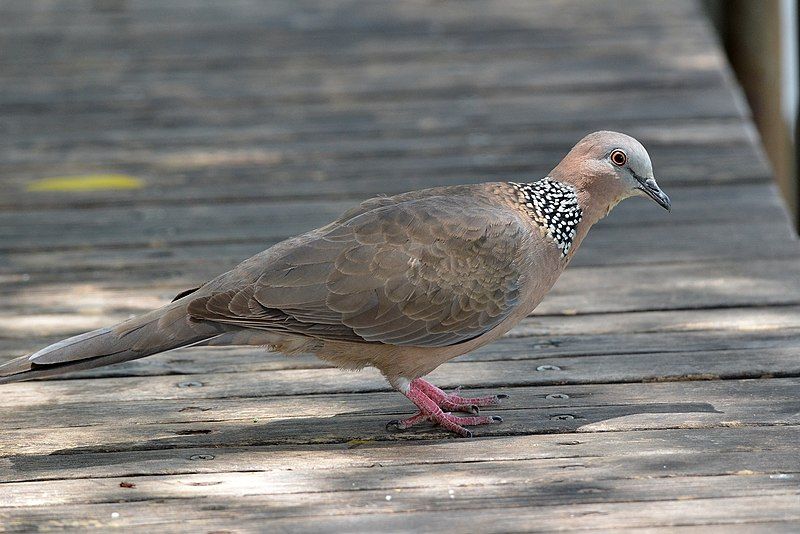
The spotted dove is a small species of pigeon that is native to the Indian subcontinent and Southeast Asia. It is characterized by its somewhat long tail and is a common resident breeding bird in its native range.
The spotted dove has been introduced to many other parts of the world and feral populations have become established in those areas. This means that the species has been able to reproduce and live in those non-native regions without human interference.
The spotted dove is an important species in the ecosystem, as it plays a vital role in the food chain. It feeds on seeds, fruits, and insects, and is, in turn, an important food source for predators.
The spotted dove is also an important species for scientific research, as it can provide valuable insights into the ecology and behavior of the species.
| Kingdom | Animalia |
| Phylum | Chordata |
| Class | Aves |
| Order | Columbiformes |
| Family | Columbidae |
| Genus | Spilopelia |
| Species | S. chinensis |
18. Cinnamon Bittern
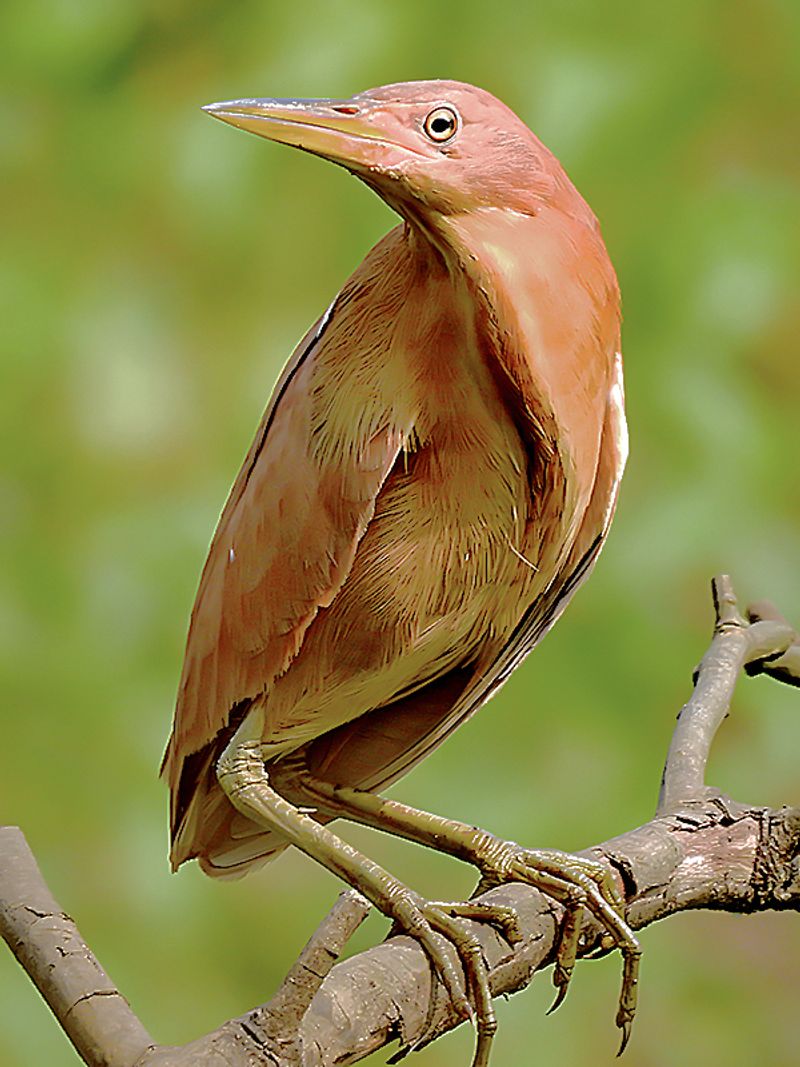
The cinnamon bittern, also known as the chestnut bittern, is a type of small bird native to regions of Asia. It breeds in tropical and subtropical areas, ranging from India to China and Indonesia.
This species is mainly resident, meaning that it does not migrate, however, some birds living in more northern areas may migrate for short distances.
The cinnamon bittern is one of the Old World bitterns, which is a family of wading birds that are found in areas of Eurasia, Africa, and Australasia. This species is characterized by its reddish-brown plumage, with a white stripe running along the sides of its neck.
It is a small-sized bird, usually measuring around 30-35 cm in length and weighing up to 200 grams. Its diet consists mainly of insects, fish, and other small animals.
| Kingdom | Animalia |
| Phylum | Chordata |
| Class | Aves |
| Order | Pelecaniformes |
| Family | Ardeidae |
| Genus | Ixobrychus |
| Species | I. cinnamomeus |
19. Striated Heron
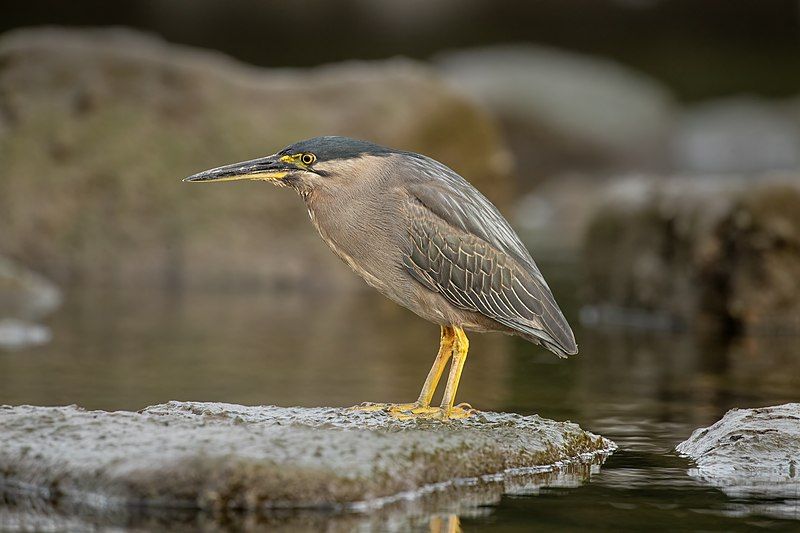
The Striated Heron is a small heron, typically only 44 cm in height, and is commonly known as the Mangrove Heron, Little Green Heron, or Green-Backed Heron. These herons are mostly sedentary and tend to stay in one place for long periods of time.
Striated Herons are also known for their interesting behavioral traits. They are known to be just as active at night as during the day, which is unusual for most birds. Additionally, they are very social and enjoy spending time around other herons in their habitat.
They often preen each other and share food with one another. Furthermore, these herons are known to be rather territorial and will defend their territory from rivals.
| Kingdom | Animalia |
| Phylum | Chordata |
| Class | Aves |
| Order | Pelecaniformes |
| Family | Ardeidae |
| Genus | Butorides |
| Species | B. striata |
20. Black-winged Stilt
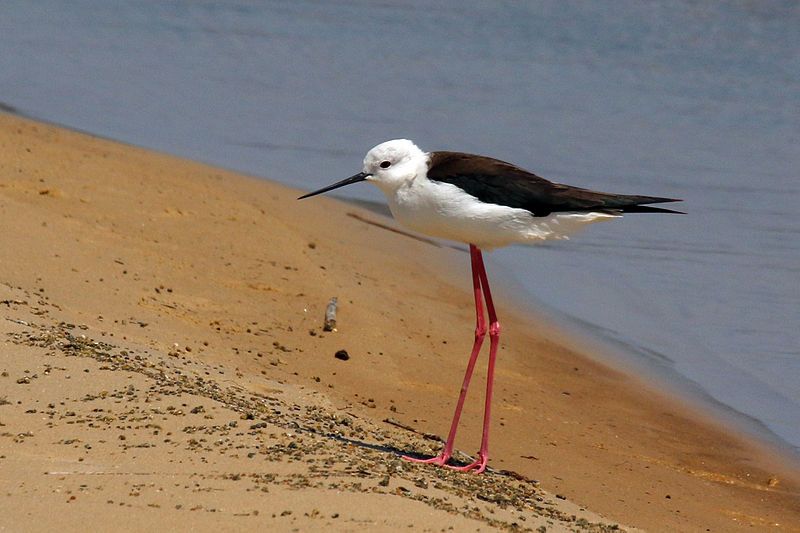
The black-winged stilt is a common species of wading bird in the avocet and stilt family, known for its very long legs. It is found in many different habitats around the world, from shallow wetlands to coastal mudflats, and is known by its scientific name H. himantopus.
The species has adapted to many different climates and is considered to be almost cosmopolitan in its range, meaning it is found in a wide variety of locations.
While it is most commonly seen in Europe and Africa, it is also known to inhabit parts of Asia, the Americas, and Australasia. The black-winged stilt is a rather unassuming bird, typically measuring between 30 and 40 centimeters in length.
It has a white head and breast, a dark grey back, and black wings with a white patch near the shoulder. Its long, thin legs range from pink to black in color.
The species is often found in flocks, foraging in shallow water for small aquatic invertebrates, such as shrimps and small fish. The black-winged stilt is a gregarious bird, and it is not uncommon to see large groups of them wading together in wetlands or mudflats.
The black-winged stilt is an important species for many wetland habitats, as its presence indicates a healthy and diverse aquatic environment. It is also an important food source for many species of predators, such as birds of prey and foxes.
The species is considered to be of least concern on the IUCN Red List, though its population is thought to be declining due to wetland degradation and loss of habitat.
| Kingdom | Animalia |
| Phylum | Chordata |
| Class | Aves |
| Order | Charadriiformes |
| Family | Recurvirostridae |
| Genus | Himantopus |
| Species | H. himantopus |
21. Cotton Pygmy Goose
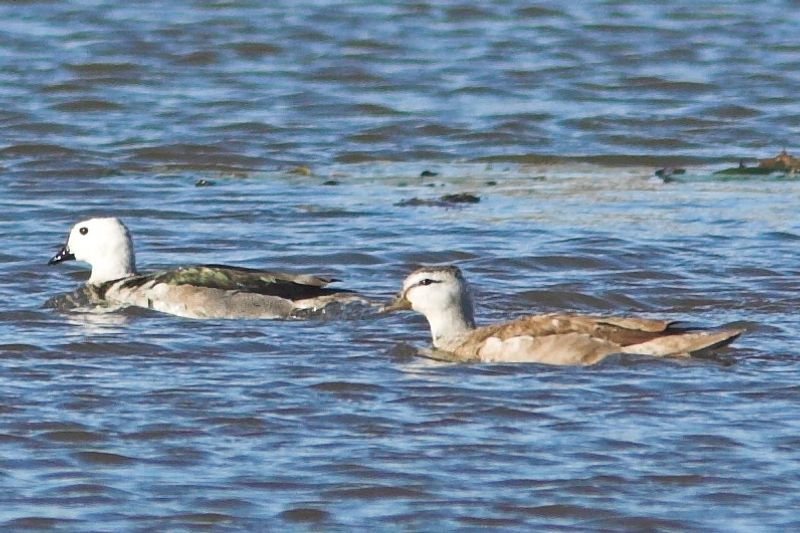
The Cotton Pygmy Goose or Cotton Teal is a species of small perching duck that is native to Asia and Southeast Asia. They are migratory birds, and their range extends south and east to Queensland, Australia, where they are sometimes called the White-Quilled Pygmy Goose.
These birds prefer shallow bodies of water with abundant vegetation, such as marshes, swamps, and rice paddies. They feed on a variety of small aquatic insects, crustaceans, and other invertebrates.
The Cotton Pygmy Goose is an important food source for many species of animals, including fish, reptiles, and other birds. In addition, they are popular with birdwatchers as their bright white feathers and small size make them easy to identify.
They are also considered important to local economies, as their feathers are often used in traditional handicrafts and decorations.
| Kingdom | Animalia |
| Phylum | Chordata |
| Class | Aves |
| Order | Anseriformes |
| Family | Anatidae |
| Genus | Nettapus |
| Species | N. coromandelianus |
22. Common Myna
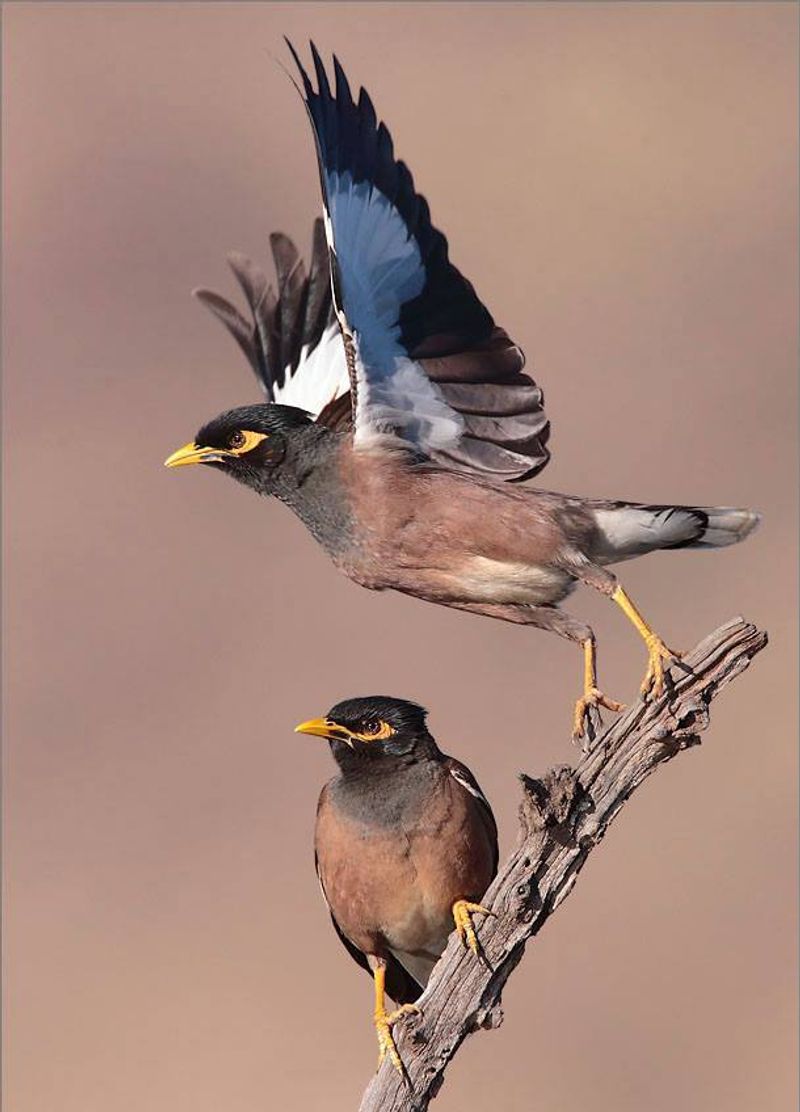
The common myna, also known as the Indian myna, is a bird belonging to the Sturnidae family. Native to Asia, it is an omnivorous bird that can be found in open woodlands. It is known to be highly territorial and has an exceptional ability to adapt to urban environments.
This species of bird has been seen to inhabit cities and towns, where it forages for food, builds nests, and raises its young. The common myna is a medium-sized bird, measuring about 20 cm in length, with a black head, wings, and tail.
It is characterized by its yellow beak and legs, and a white patch on its neck. It has a distinctive call, which can be heard in both rural and urban areas. Its diet consists of insects, fruit, and other small animals.
It is also known to feed on human food scraps. The common myna is a social bird, often seen in small flocks of up to 15 individuals. It is highly vocal, and its calls are loud and distinctive.
The common myna is also known to be quite aggressive towards other birds and animals, especially during the nesting season. In recent years, the common myna has become a pest in some areas, as its large flocks can cause serious damage to fruit and grain crops.
It is also known to compete with native species for nesting sites and food and is a potential carrier of disease. Despite this, the common myna is an important part of the local ecosystem, and its presence should not be underestimated.
| Kingdom | Animalia |
| Phylum | Chordata |
| Class | Aves |
| Order | Passeriformes |
| Family | Sturnidae |
| Genus | Acridotheres |
| Species | A. tristis |
23. Paddyfield Pipit
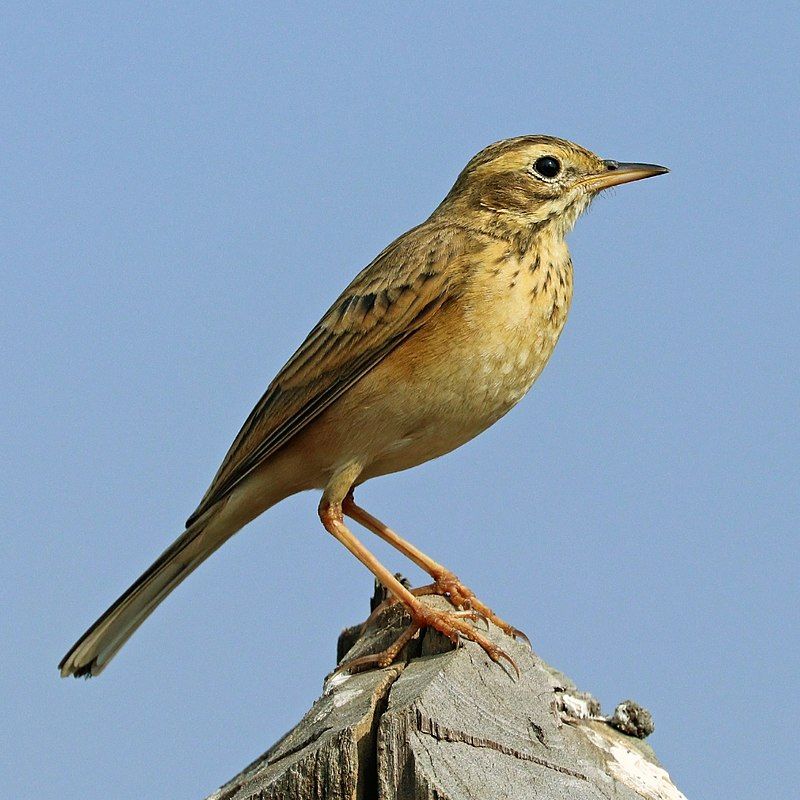
The Paddyfield Pipit, also known as the Oriental Pipit, is a small bird classified in the Pipit and Wagtail family of birds. It is a species found in many parts of southern Asia, from India eastwards to the Philippines.
These birds are known as resident breeders, meaning that they live and breed in the same area all year round.
They can be found in open scrub, grassland, and cultivated areas. The Paddyfield Pipit has a brownish-streaked back and a white belly, with a long tail and a pinkish-brown bill.
This species is typically found in pairs, or in small groups, as they forage for food in the grass or on the ground. They mainly feed on insects, but will also eat some small seeds and berries.
Breeding season typically begins in the summer months, when they build their nests on the ground, usually in the base of a shrub or bush. The Paddyfield Pipit is an important species to its local ecology.
Its presence contributes to the balance of the local insect population, which can prevent the spread of disease and other problems. Additionally, their presence is important for the local bird populations, as it provides a valuable food source for other species.
The conservation of this species is therefore important, as it can provide a great benefit to its local environment.
| Kingdom | Animalia |
| Phylum | Chordata |
| Class | Aves |
| Order | Passeriformes |
| Family | Motacillidae |
| Genus | Anthus |
| Species | A. rufulus |
24. Common Moorhen
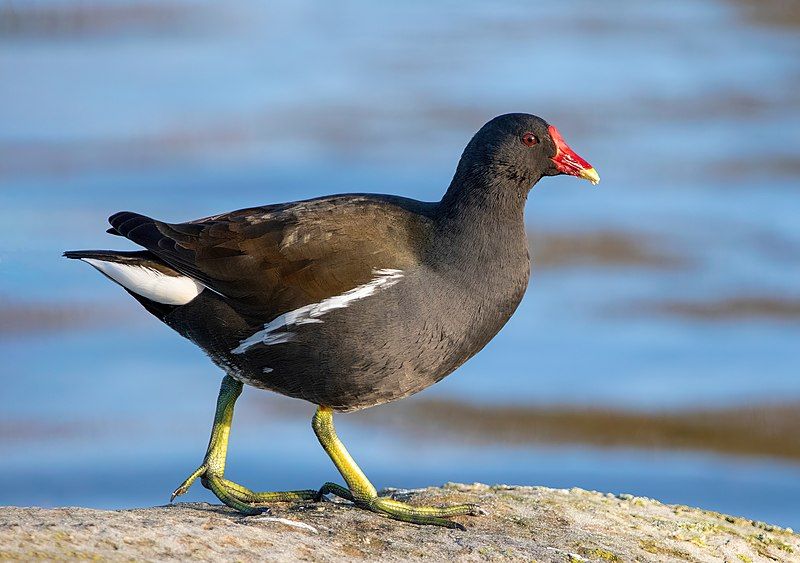
The Common Moorhen also referred to as the Waterhen or Swamp Chicken, is a species of bird belonging to the rail family. This species is found in many parts of the Old World, such as Europe, Africa, and Asia.
The Common Moorhen prefers habitats with plentiful vegetation, such as marshes, ponds, canals, and other wetlands. They are often found near bodies of water, where they can feed on aquatic plants as well as small animals, insects, and fish.
Common Moorhens build their nests near the water’s edge, in dense vegetation, or in other areas that provide adequate cover. They are quite active during the day, and can often be seen swimming, wading, or scavenging for food.
The Common Moorhen is an important species in many wetland ecosystems, providing food for predators and helping to keep the water clean by eating algae and other debris.
| Kingdom | Animalia |
| Phylum | Chordata |
| Class | Aves |
| Order | Gruiformes |
| Family | Rallidae |
| Genus | Gallinula |
| Species | G. chloropus |
Conclusion
Birds in Malacca are diverse and abundant. They can be found in a variety of habitats in the region, ranging from urban areas to the forests and mangroves of the coast.
Different species of birds can be seen throughout the year, with migratory birds visiting during the winter months. Birdwatching is a popular activity in the area and many birders come to the region to observe the variety of species found here.
The unique and diverse birdlife of Malacca makes it a great destination for both birdwatchers and nature enthusiasts alike.